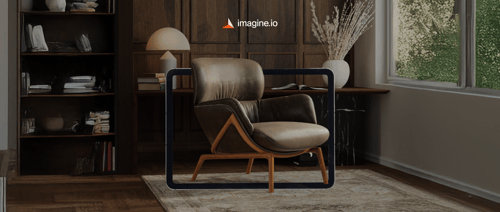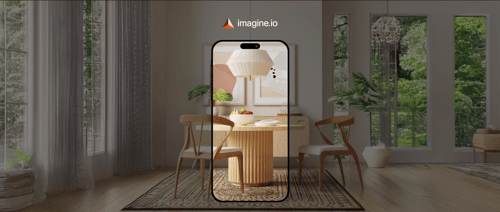Quick Listen:
In a modest studio in Portland, a team of designers fine-tunes the sheen on a virtual oak dining table. No sawdust coats the floor, no photographers adjust lighting rigs. Yet, the screen displays a photorealistic image, poised to captivate online shoppers. This is the new frontier for independent furniture brands, where 3D rendering tools are dismantling barriers in a market long ruled by retail behemoths.
The furniture industry, once the domain of corporations with budgets for lavish showrooms and high-end photo shoots, is witnessing a seismic shift. Small, innovative brands agile and often rooted in local craftsmanship are gaining ground. Their edge? Cutting-edge technologies like 3D rendering and augmented reality (AR), which deliver stunning product visuals at a fraction of traditional costs. Companies like imagine.io lead this charge, providing solutions that enable smaller players to rival industry titans. The outcome is a marketplace where ingenuity trumps financial might, giving independent brands a fighting chance to shine.
The Digital Transformation of Furniture Retail
The data underscores this revolution. A report values the global 3D rendering market at $3.11 billion in 2022, projecting a surge to $34.57 billion by 2032, driven by a 27.67% compound annual growth rate (CAGR). This growth stems from the technology's adaptability, revolutionizing fields from gaming to architecture. For furniture brands, 3D rendering is transformative, converting digital models into lifelike images with minimal effort, eliminating the need for costly studios and equipment.
Augmented reality amplifies this impact. Shoppers can now use smartphones to project a virtual sofa into their living room, assessing its fit before purchasing. According to industry insights, the 3D rendering market reached $3.85 billion in 2023 and is expected to climb to $23.78 billion by 2034, with an 18% CAGR, fueled by demand for AR and virtual reality applications. Independent brands leverage these tools to craft immersive experiences that compete with those of larger rivals, all without exorbitant budgets.
This technological shift is democratizing access. Tools once exclusive to tech giants are now intuitive and cost-effective, thanks to innovators like imagine.io, which caters to small and medium-sized enterprises (SMEs). A market analysis forecasts the 3D rendering market to grow from $2.04 billion in 2025 to $2.25 billion by 2030, at a 2% CAGR, with North America at the forefront and Asia Pacific as the fastest-growing region. This global embrace empowers startups from Austin to Auckland to challenge established brands.
Success Stories: Technology Driving Results
Real-world examples illustrate the power of these tools. A small furniture brand in Raleigh, North Carolina, faced budget constraints for professional photography. By adopting imagine.io's 3D rendering solutions, they produced vivid images of their artisanal bookshelves and desks. The impact was immediate: online sales surged 30% in three months, as customers trusted the polished visuals. Product returns also declined, reflecting greater buyer confidence. Such outcomes are becoming common as brands harness digital visualization to boost engagement.
AR delivers even deeper connections. A Denver-based startup integrated AR into its online store, allowing customers to visualize armchairs in their homes via mobile devices. The result? A 15% drop in returns and heightened customer satisfaction, as shoppers made better-informed choices. These technologies don't just showcase products they foster trust, creating emotional bonds that static images can't replicate. As noted, the visualization and 3D rendering software market reached $3.29 billion in 2023, growing at a 22.5% CAGR since 2018, driven by tools that enhance visual storytelling.
Navigating Challenges: Costs and Complexity
Despite their potential, 3D rendering and AR present hurdles. Initial costs software, training, and occasionally hardware can strain small budgets. While prices have fallen, they remain a barrier for brands operating on tight margins. The learning curve is another obstacle. Mastering rendering software demands expertise, and subpar visuals risk appearing cartoonish, undermining a brand's credibility.
Quality assurance is critical. A chair's fabric, lighting, and shadows must be flawless to avoid misleading customers, requiring skilled operators and meticulous oversight. AR introduces additional concerns, particularly around data privacy. Apps that scan user's homes to place virtual furniture raise questions about security and compliance. Brands must address these issues transparently to maintain trust.
The Rewards: Efficiency and Customer Loyalty
The benefits far outweigh the challenges. 3D rendering eliminates the need for physical prototypes and expensive photo shoots, allowing brands to refine designs and launch products in days, not months. Virtual prototyping also reduces material waste and shipping costs, enabling experimentation without financial risk. A comprehensive study highlights 3D rendering's role in industries like architecture and manufacturing, with visualization and simulation driving operational efficiencies.
For consumers, the advantages are equally compelling. Interactive 3D models and AR create engaging, personalized shopping experiences. A customer who can “place” a table in their dining room is more likely to purchase and keep it, fostering loyalty. This connection is vital for independent brands, transforming one-time buyers into advocates in a trust-driven market.
The Future: Innovation on the Horizon
The data supports this vision. With markets poised for significant growth, independent brands have a prime opportunity to innovate. While North America leads, Asia Pacific's rapid expansion signals a global shift. Advances in 5G and edge computing, as discussed, will enhance AR, making real-time, immersive experiences standard.
In that Portland studio, the designers save their final render, watching their table materialize onscreen. It's more than a product it's a declaration. Independent furniture brands, equipped with 3D rendering and AR, are no longer underdogs. They're trailblazers, proving that vision and technology can eclipse financial clout. As these tools advance, so will the stories of small brands disrupting the status quo, one impeccably rendered design at a time.
Disclaimer: The above helpful resources content contains personal opinions and experiences. The information provided is for general knowledge and does not constitute professional advice.
You may also be interested in: imagine.io | Award Winning 3D + AI Product Visualization
Struggling with expensive, outdated product visuals that slow down your creative process and stunt eCommerce growth? imagine.io's AI-powered platform empowers furniture, home décor, and textile brands to effortlessly produce striking 3D images, immersive videos, AR experiences, and interactive configurators. Cut production costs up to 70%, boost conversions 5X, speed up prototyping, and supercharge your online sales. Ready to elevate your product visuals and captivate customers? Book a demo with imagine.io today!
Powered by flareAI.co




.png?width=500&name=How%20to%20Add%20a%203D%20Product%20Configurator%20to%20Your%20WordPress%20Website%20(Complete%20B2B%20Guide).png)
















%20(1).png?width=500&name=Why%20Exploded%20Mattress%20Views%20Matter%20(And%20How%20to%20Generate%20Them)%20(1).png)
.png?width=500&name=Best%20Shopify%20Product%20Configurator_%20How%20to%20Choose%20the%20Right%20One%20(2).png)
.png?width=500&name=Why%20Exploded%20Mattress%20Views%20Matter%20(And%20How%20to%20Generate%20Them).png)



.png?width=500&name=Best%20Shopify%20Product%20Configurator_%20How%20to%20Choose%20the%20Right%20One%20(1).png)







.png?width=500&name=How%203D%20Rendering%20Can%20Make%20or%20Break%20Your%20Industrial%20Design%20Pitch%20(1).png)








%20with%20Digital%20Twins%20and%203D%20Visualization.png?width=500&name=Optimizing%20Your%20Digital%20Asset%20Management%20(DAM)%20with%20Digital%20Twins%20and%203D%20Visualization.png)




.png?width=500&name=Styling%20Home%20Decor%20for%202025_%20From%20Global%20Influences%20to%20Playful%20Personalization%20(1).png)
